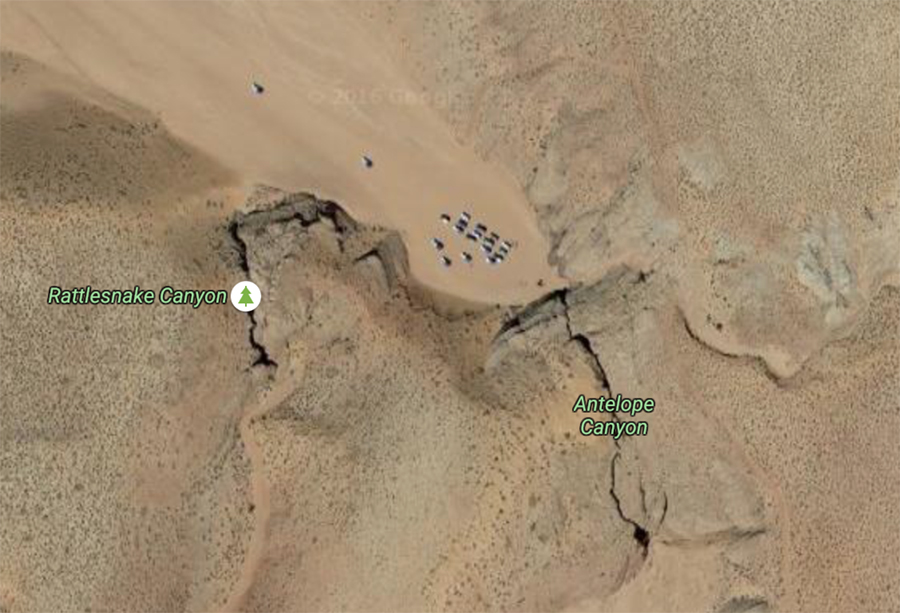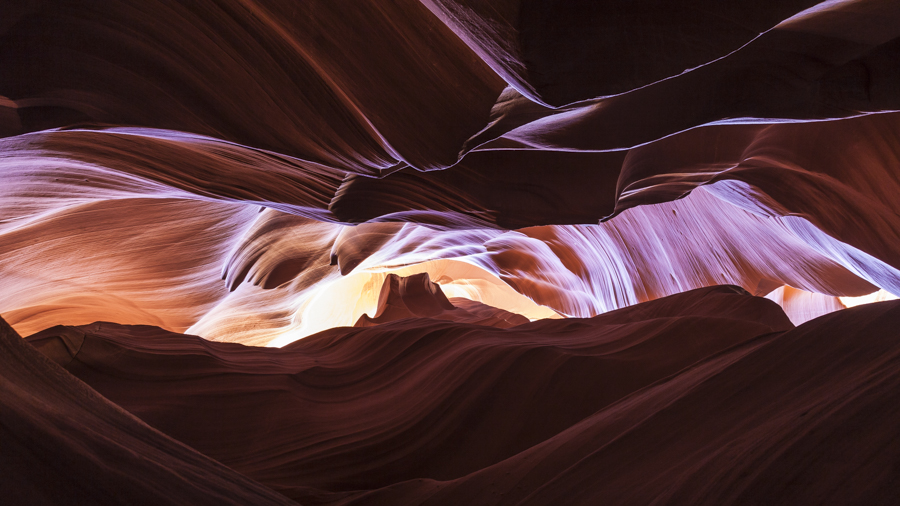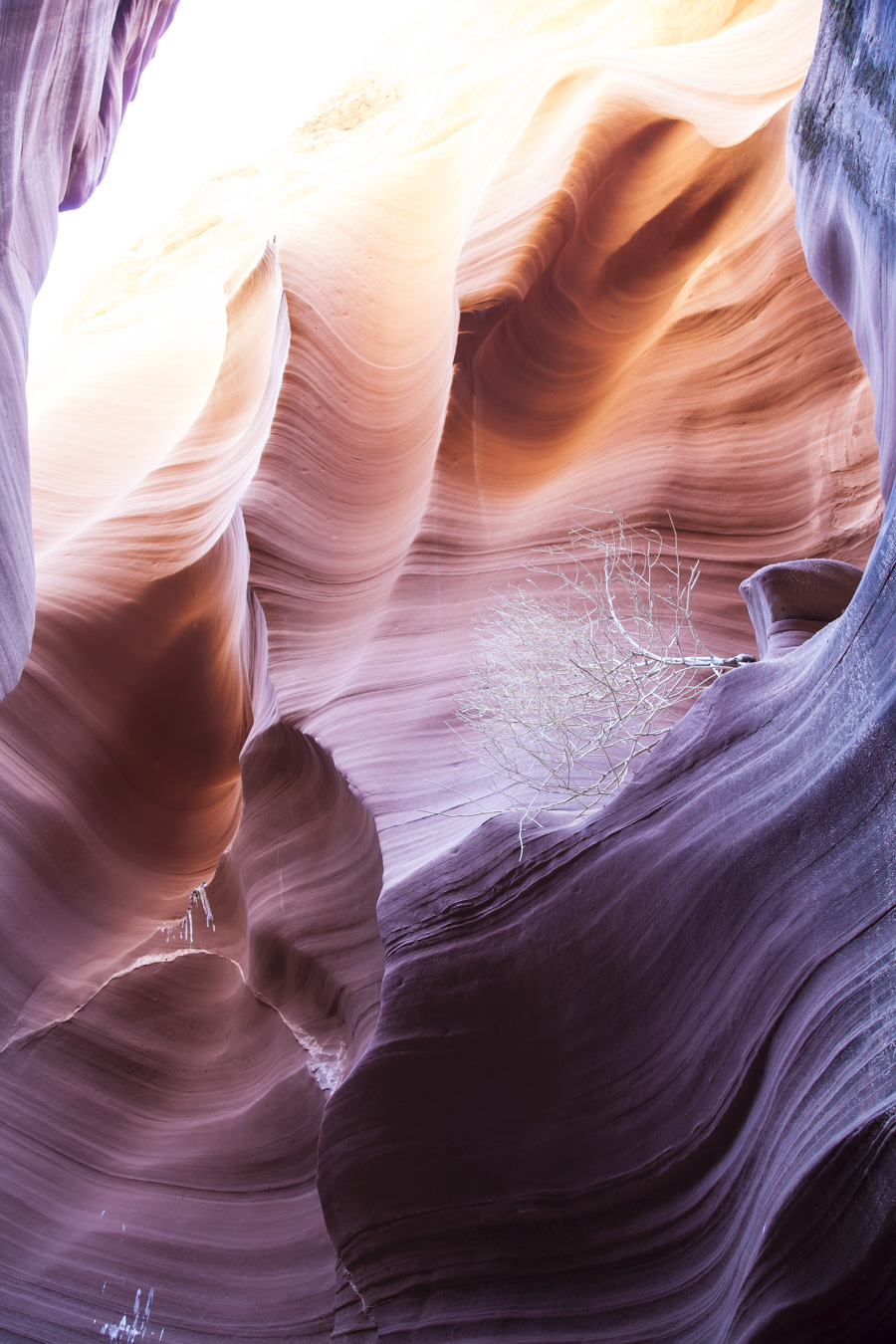This past weekend, I ventured north to Page, Arizona, a small town located on the Navajo Nation just south of the Utah border. My traveling and photography companion was Bill McAdam, a longtime friend dating back to when we began our careers at Imperial Oil.
Page is noted for its scenic beauty and several well known tourist and photographic attractions, most notably the slot canyons just east of town. Although Upper Antelope Canyon is the best known, there are several others of equal interest. A slot canyon is a narrow canyon, formed by the wear of water rushing through rock. A slot canyon is significantly deeper than it is wide. Upper Antelope Canyon, for example is 660 ft (200 m) in length and about 120 ft (37 m) deep. The width of the trail through the canyon varies from 3 to 20 ft (1-6 metres) and viewed from above, it is much narrower, 1-2 ft (.3-.6 m) only. Rattlesnake Canyon is small by comparison.
The canyons’ appeal is the fascinating shapes of the walls, carved by wind and water over long periods of time. For photographers, it’s the amazing light, constantly changing as the sun moves across the sky. The opening at the top, very narrow and jagged allows very little direct sunlight to penetrate the full depth. Most of the light is reflected off the the irregular canyon walls, creating ever changing highlights, shadows and colours. The combination of the varying light patterns and the jagged shape of the walls creates a unique experience for all visitors, but an unparalleled adventure for photographers.

Bill and I spent over 3-1/2 hours exploring and photographing Rattlesnake and Upper Antelope Canyons. We were fortunate to be accompanied by Roman, a knowledgeable guide and photographer. Roman grew up in the area and has an intimate knowledge of the canyons and their light patterns.
I’m sure you’d rather view some photos that hear more about the canyons. I could go on for quite awhile! Here are some photos, beginning with my two favourites.
This particular location is referred to as “Monument Valley”. The vertical protrusion in the very centre of the scene looks very much like a butte from Monument Valley.

I’m not aware of an official name for this particular scene, but what strikes me is the tree branch on the shelf to the right. Trees don’t grow in the canyons, so “stray” is an appropriate adjective. Photographically, I’m not a fan of overexposure so this is something unusual for one of my pictures. It works in this case and is almost unavoidable when a lot of light is coming in to a very dark area of the canyon. And, this is what you actually see!

Rather than comment on all the pictures, I’ve included a slideshow of the remaining images I wish to share today. I hope you like them. Click on the right to advance; on the left to go back.


Awesome… would love to back to that area myself… better informed on how to shoot?
Beautiful! I still dream of going there one day.
W O N D E R F U L
If you go, let me know. I can recommend a guide and choice of tours.
Amazing photos, Peter. What a beautiful place!
It is indeed, Pat. I think it’s my favourite of all the places I’ve visited up there. Glad you enjoyed.